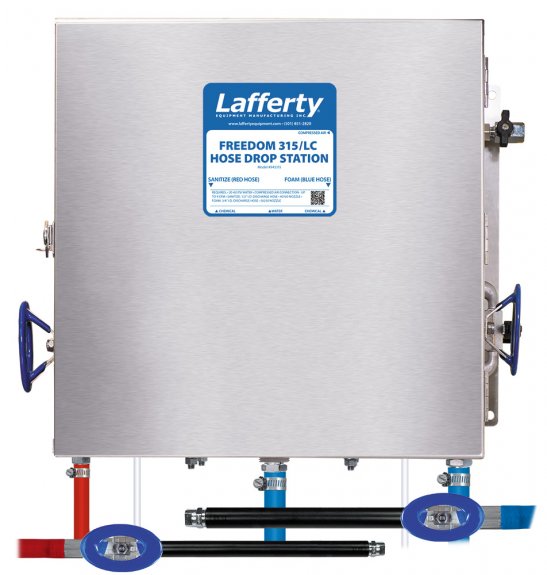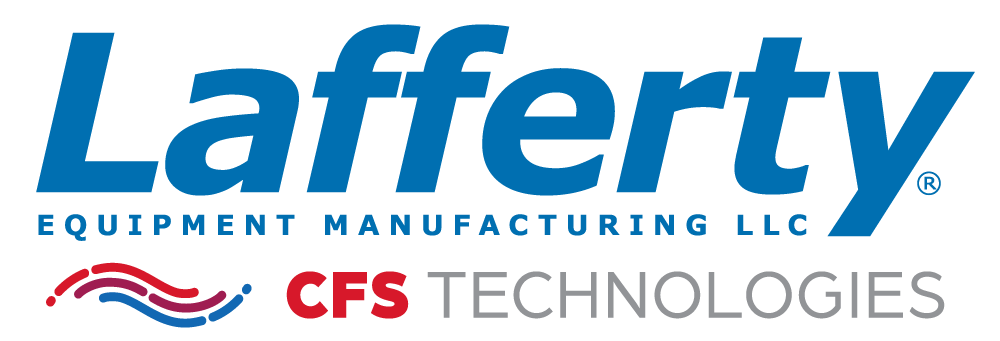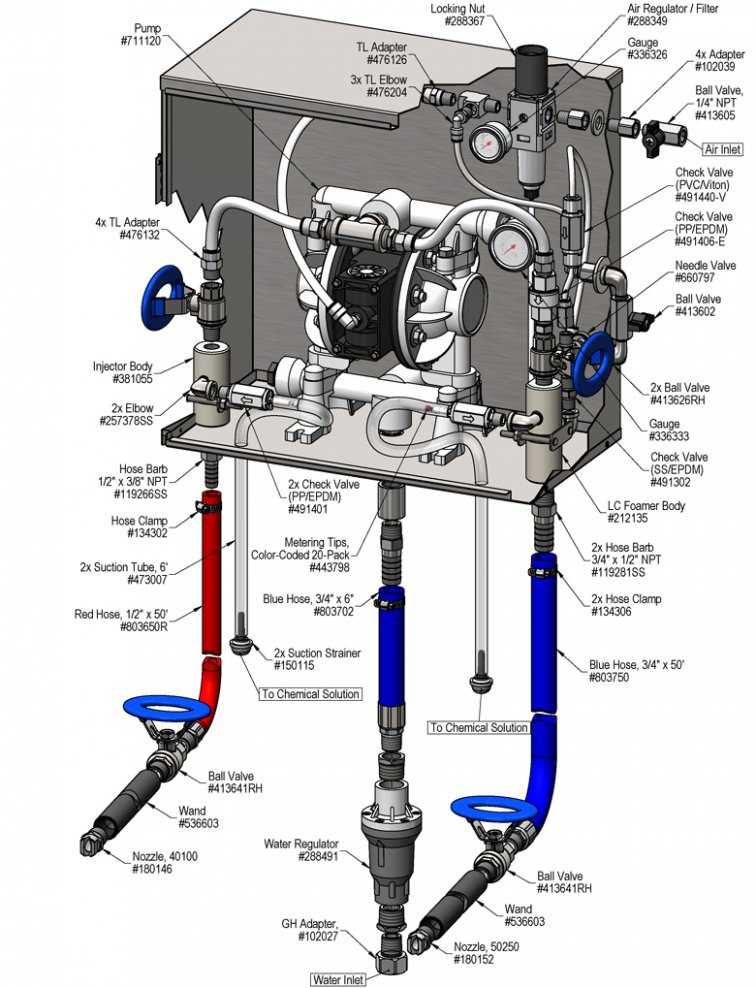The Freedom 315 Sanitize / LC Foam Hose Drop Station is designed to overcome low or fluctuating water pressure issues, and is a medium volume venturi applicator for applying one chemical as foam and another as a sanitizing spray. It accepts incoming water pressure from 20 to 60 PSI then regulates and maintains the pressure for consistent output. Also, it is adaptable to draw static water from a supply tank.
A lockable, stainless steel cabinet protects components, including the polypropylene foamer and sanitizer bodies, which draw and blend chemical concentrates into the water stream to create accurately diluted solutions. Compressed air is injected into the foaming solution to greatly increase its volume and coverage ability as rich, clinging foam that is projected through the hose, wand and nozzle up to 10 feet. The sanitizer solution is projected as a "flooding" spray for fast, complete coverage.


